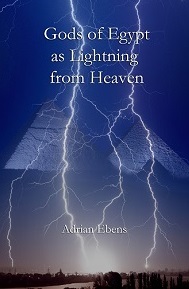How Readest Thou?
[Note carefully how E.J Waggoner builds upon Miller's Rules to explain the Adventist Method of Reading Scripture. Note also the reason why Adventists interpret the Prophetic periods as symbolic time periods and not literal]
November 30, 1882
"How Readest Thou?" The Signs of the Times 8, 45. E. J. Waggoner
A correspondent of the Sabbath Recorder has asked that paper the question, "What is the difference between Seventh-day Baptists and Seventh-day Adventists?" The Recorder states the principal points of difference, but on two points it seems to misapprehend the position Adventists. In this article we will notice one of these points, because it is one which concerns all, and it involves the interpretation of the Scriptures.The Recorder says:-
"These different views grow, mainly, out of different means of interpreting the Scriptures. The Adventists interpret everything literally. The Seventh-day Baptists recognize the fact that Scripture language is often 'highly figure and must be interpreted accordingly.'"
As far as the last sentence is concerned, we are one with our Seventh-day Baptist brethren. We know that Scripture language is at times very highly figurative. No sane person who is ever read the Bible could think otherwise. For instance, the twelfth chapter of Revelation is plainly figurative. No one can suppose that that chapter is an account of a literal woman being pursued by a literal dragon, or that any literal dragon withdrew literal stars from Heaven with his tail. But by reference to the book of Daniel we learn that beasts are used to represent earthly governments, Dan. 7:17; 8:20, 21; and when we come to the thirteenth of Revelation and find that the dragon gave to a certain beast his "power, and his seat, and great authority," Rev. 13:2, we cannot do otherwise than conclude that this dragon is also used to represent an earthly government. So also with the beast. We do not believe that a literal beast had a mouth speaking great things, and opened his mouth in blasphemy against God, or that any wild animal would pursue the saints of God in preference to sinners. These things plainly show that this beast represents a blasphemous, persecuting, earthly power.
Such instances of figurative language might be given infinitely, but these are sufficient to show that Seventh-day Adventists recognize the fact that the Bible does contain figurative of language. A more important consideration is, by what rule to interpret the Bible. This is not so difficult a matter as most people suppose. There is not a book of any importance in the English language, or in any other, that does not contain figures. There is not an individual who does not use figures in his daily conversation. Yet we have no difficulty in [536] understanding them. Now we think that the Bible has the advantage of all the books in its use of figures, and for this reason: It is the language of inspiration, and, consequently, there is harmony throughout; its figures are never confused; but men are liable to change and often use figures entirely inappropriate. The Bible, then, may be understood as well as any other book. No one who believes that it is a revelation from God to man can doubt this; for it would be folly to give a communication that could not be understood. If it could not be understood, it would not be a revelation. The following simple rules of interpretation will guide to a correct understanding of the Scriptures:-
1. Accept a statement as literal, unless it is plainly figurative. If there is any absurdities in the statement when interpreted literally, or if it would not harmonize with other parts of Scripture, then it must be a figure.
2. Figures that are in common use must be interpreted as they would be in any other book; give them their most obvious meaning. Any word in the Bible has the same meaning that it has anywhere else, unless the sense requires that it should be understood as figurative.
3. When a figure is used, if its meaning is not obvious, an explanation will be found either in connection with it or in some other part of the Bible.
4. When we have found the correct meaning of a figure, or that which a symbol represents, we can substitute this meaning for that figure or symbol, and it will make good sense.
5. When we have the correct understanding of any passage, however figurative the language may be, it will not contradict any other part of the Bible, figurative or literal; there will be harmony throughout.
6. If after a prophecy is fulfilled we find that it corresponds in every particular with the events which our principles of interpretation would lead us to expect, then we may know that our rule is correct, and we may confidently apply the same principles of interpretation to those parts of the prophecy which are yet to be fulfilled.
7. And most important of all, we must believe that the Bible is the word of God, and that as such it must be true in every particular, and, consequently, perfectly harmonious. This belief must be so strong that it amounts to absolute knowledge. Enough of the Bible has been fulfilled to demand such faith.
These rules will, we think, guide to a correct knowledge of the Scriptures. A few illustrations may be given. Thus: When it is stated that Job had seven thousand sheep, or that lambs were to be offered in sacrifice, we understand that literal sheep and lambs are meant. But when Christ said to Peter, "Feed my sheep, and "Feed my lambs," we have no difficulty in understanding that he desired Peter to have a care for his disciples, and to encourage and strengthen them. The fact that Christ calls himself the Shepherd, and his followers a flock, confirms this. When Daniel speaks of seeing a goat, Dan. 8:5, 8, we readily conclude from the context that a literal goat is not meant, and when we come to the 21st verse we find the explanation given. We read both in Daniel and in Revelation that the beast continued a certain number of days. We conclude that these are not literal days for two reasons. 1. They are used with reference to beasts, which are plainly declared to symbolize kingdoms. 2. The number of days indicated would, if literal, be an insignificant length of time for any kingdom to retain power, and the kingdoms there brought to view did actually exist for a much longer period. Having found the days to be symbolical, we search the Scriptures, and find that a day in prophetic language represents a year. Num. 14:33, 34; Eze. 4:6. We then read these days as years and find that they represent a reasonable length of time for a government to last; and when we consult history, we find that these nations did actually hold power a number of years equal to the number of days mentioned in the prophecy. Thus our chain of reasoning is complete and our mode of interpretation is established as correct beyond the shadow of a doubt.
And so we might go on in giving examples of interpretation. There are in the Bible many things "hard to be understood," but it is not impossible to understand them. "If any of the lack wisdom, let him ask of God, . . . . and it shall be given him." Jas. 1:5. "If any man will do his will, he shall know of the doctrine." John 7:17. Unaided human reason cannot grasp the meaning of the Scriptures; but a sanctified judgment, one that is directed by the Spirit of God, can understand. See 1 Cor. 2:4-16. E. J. W.




